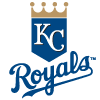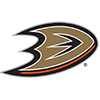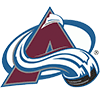Mound Musings is all about interaction. I appreciate the questions, and discussing whether this guy or that guy is the best pitcher to have on a roster is what it's all about. That said, over the past couple of years, Life, the Universe and Everything, has gradually become a semi-regular part of Mound Musings. As we try to answer the ultimate question, I'll occasionally dedicate this space to elaborating on questions from you, the readers. As we get up to speed for the 2020 season, I thought it might be useful to outline some of the things I focus on when comparing pitchers, or just deciding whether I would like a specific pitcher taking the mound for my teams. There are several things to look at, so let's go.
Roster "Slotting" Changes Everything: Let's kick things off with some explanation regarding the question I probably see most often – "Please rank Pitcher A, Pitcher B, Pitcher C and Pitcher D." It's certainly a very fair question, and I do my best to offer my best opinions, but there is a factor that often impacts the response. I call it roster slotting.
Roster slotting as it relates to a fantasy pitching staff translates to the approximate level of performance expected from the pitcher occupying that slot. On a typical fantasy roster, I generally have 14 to 15 spots reserved for pitchers. Of those spots, I usually anticipate rostering about 10 starting pitchers. Prior to the draft, I plug in the pitchers
Mound Musings is all about interaction. I appreciate the questions, and discussing whether this guy or that guy is the best pitcher to have on a roster is what it's all about. That said, over the past couple of years, Life, the Universe and Everything, has gradually become a semi-regular part of Mound Musings. As we try to answer the ultimate question, I'll occasionally dedicate this space to elaborating on questions from you, the readers. As we get up to speed for the 2020 season, I thought it might be useful to outline some of the things I focus on when comparing pitchers, or just deciding whether I would like a specific pitcher taking the mound for my teams. There are several things to look at, so let's go.
Roster "Slotting" Changes Everything: Let's kick things off with some explanation regarding the question I probably see most often – "Please rank Pitcher A, Pitcher B, Pitcher C and Pitcher D." It's certainly a very fair question, and I do my best to offer my best opinions, but there is a factor that often impacts the response. I call it roster slotting.
Roster slotting as it relates to a fantasy pitching staff translates to the approximate level of performance expected from the pitcher occupying that slot. On a typical fantasy roster, I generally have 14 to 15 spots reserved for pitchers. Of those spots, I usually anticipate rostering about 10 starting pitchers. Prior to the draft, I plug in the pitchers I protected (I play almost exclusively in keeper/dynasty leagues, but the approach is pretty much the same in redrafts), then break down the available pitchers into tiers based on my expectations. I'll use that list to fill the empty slots.
These slots carry my own "expectations" of minimum performance. Slot 1 is my "ace" while slots 2 to 5 will be filled by starting pitchers I expect to contribute every week, rarely if ever being out of the active lineup as long as they are healthy. Slots 6 and 7 (sometimes 8) are typically filled with situational types like streamers that slip in and out of the active lineup based on injury fill-ins, match-ups, and/or slumps and hot streaks. The final two slots are frequently reserved for more speculative selections. Think young, high ceiling but higher risk pitchers who could be windfalls later in the year, or might be inexpensive, budding protections for next season and beyond. Basically, at least one of these slots will be an investment in the future, and I don't count on them to be active this year.
For this exercise, let's say I protected five starting pitchers, and I slotted them as follows: Patrick Corbin (1), Mike Soroka (3), Julio Urias (4), Dinelson Lamet (5), and Shohei Ohtani (7). The first four would be expected to be in the active lineup every week, while Ohtani, given his anticipated workload restrictions, would pitch when circumstances seem favorable. Keep in mind, slots are not set in stone. In fact, the hope is the pitchers will outperform their assigned slots (that is value) while "doing no harm" for the pitchers in the later slots. More on that below. On draft day, I need to fill slots 2, 6, 8, 9 and 10. I feel pretty good about buying one frontline starter, hopefully with ace potential, two decent upside starters to pitch as needed and hopefully perform well enough to grab a more permanent rotation spot, and two speculative picks.
And, that is why a "please rank these pitchers" question can get a bit complicated. The intended slot almost always impacts the ranking. Let's say the list of pitchers to rank includes Madison Bumgarner and MacKenzie Gore. If I am looking to fill that empty Slot 6, Bumgarner is easily a strong consideration, and depending on who is still available, he might even be an iffy possibly for Slot 2. Gore, while perhaps my favorite target for Slot 9 or 10, is probably not practical for a slot expected to pitch in the active lineup until later in the season, if then. I like both pitchers, but for very different roles.
The "Do No Harm" Principle: Every year I talk a bit about the "Do No Harm" principle. It's a cardinal rule in my approach. Regular readers know I mention this principle frequently. The impact of sub-par performance, often as injury replacements, and the need to win now can be devastating for actual MLB teams and your fantasy squad. Just like you, they may have to replace a regular starter, and their goal will be (at least) to "do no harm" while that regular starter is out of action. It's very unlikely you will be able to stack a rotation with nothing but healthy, top-of-the-rotation talent, but you have to be careful when filling those back-of-the-rotation slots. More so than with hitters, a bad pitcher can be a nightmare waiting to happen. Poor hitters may not add counting stats, but that pitching nightmare can haunt your WHIP and ERA for the rest of your season. That is doing harm, and it's not an easy thing to erase.
A top prospect can be very appealing, but is the kid ready? These days pitchers are frequently rushed to the majors, and while they may briefly enjoy some success while hitters learn their strengths and weaknesses, the under-developed aspects of their game usually surface fairly soon. Just when you think they are safe to use in your lineup, the meltdown comes. And, in reality, they might not be very good prospects. It may seem counterintuitive, but teams are usually more conservative in promoting the best arms in their system. So, especially earlier in the season, it might be safer to fill-in with that boring veteran who isn't likely going to be a huge boost, but, being a known commodity, is less likely to offset the contributions of your frontline guys.
The Impact of Injuries With the Schedule Delay: Injuries have been a growing part of the fantasy game for quite some time, but how they impact your team has changed dramatically with the current pandemic. The questions are similar – How soon will my guy return? What can I expect when he comes back? If he's a little rusty, how can I tell? Those are the questions, but the answers are much more difficult to predict. The fact is, we don't know when injured pitchers will return, even when fully healthy, because we don't know when baseball will return.
Obviously, injuries vary widely. Some are relatively minor, and the pitcher returns in just a couple of weeks. In most cases, the impact on the pitcher's performance is relatively insignificant. The exception being that the pitcher could pitch better if he was hindered by the injury before landing on the injured list. For pitchers who were expected to miss Opening Day in late March but be ready to go shortly afterward, the delay probably means they won't miss any actual game action. They probably can be added to your draft list as if they are completely healthy.
Other injuries are more problematic when determining return dates and anticipated performance when the pitcher returns, and even more challenging in today's world. Injuries that require surgery, like Tommy John surgery, surgery to repair significant shoulder problems, and thoracic outlet syndrome surgery (TOS) immediately come to mind. These injuries have different recovery timelines and often provide different challenges when determining future expectations. Shoulder woes include so many variables and require so much rehab, that they are (IMHO) the hardest to evaluate. In most cases, recovery timelines are "best guess" estimates, and setbacks, extending the recovery timeline, are common. My best advice is to wait until the pitcher has been back to throwing at speed for several bullpen sessions, without setbacks. Just be aware that setbacks can still happen, and there could be changes in the pitcher's mechanics to try and avoid future damage. As for TOS surgery, I am certainly not a doctor, or even a trainer, but in my experience, it seems many pitcher's have a very tough time coming back. If the pitcher was someone I was very interested in owning, I don't write him off, but I do consider him very risky. The big challenge here is the likely lack of clearly documented rehab progress, at least until "spring" training resumes.
I'm specifically speaking of anticipated returns for those pitchers rehabbing from 2019 surgeries or longer term injuries. Some keys pitchers who could actually benefit from the later Opening Day are guys like Ohtani, Mike Clevinger, Carlos Rodon, Cole Hamels, James Paxton and Griffin Canning, along with potential high level relievers like Emmanuel Clase, Austin Adams, Reyes Moronta and Jordan Hicks. Assuming the season gets underway sometime this summer, these pitchers (and quite a few others) who were expected to miss a big chunk of 2020, might not miss much time at all.
A final thought on injuries and COVID-19. It's possible the decision to undergo surgery with a longer term rehab timeline could be easier with the chance of missing far less real game action a likely possibility. Already, top arms like Noah Syndergaard, Chris Sale and Luis Severino have gone under the knife ruling them out for all of this year.
Some Notable Rotation Ramblings:
- Pirates' ace Jameson Taillon was expected to miss the entire season after undergoing Tommy John surgery last August. Even though he could theoretically be ready if the schedule extends into October or November, the team has announced he will not pitch. Don't forget him in keeper/dynasty formats.
- It appears that Shohei Ohtani will be able to pitch as soon as the season begins, but the Angels plan to limit him to one start per week, and he won't hit on the day he pitches, or the day after, reducing his potential value as a batter. This has the effect of making his net value very difficult to estimate.
- The Reds' Luis Castillo has essentially been a two-pitch pitcher with his fastball and change-up, but his slider is improving. If that breaking pitch becomes more consistent, he could take another big step forward this season. As with so many others, his progress will be hard to judge until he gets back on the field.
- One pitcher I have been somewhat intrigued with is Toronto's Ryan Borucki. He has had some elbow issues but is back throwing. I don't see him as a top-of-the-rotation guy, but if he's back to full health, he could fit nicely into one of those situational rotation slots at a very appealing price. Keep an eye on him.
- Garrett Richards is a pitcher I am anxious to see this season. I loved him back in the day, but injuries have derailed his progress (he hasn't tossed significant innings since 2015). Now with the pitcher-friendly Padres, and hopefully fully healthy, he could be looking at a big season, especially with a short schedule.
- It would be hard to imagine the season beginning without at least a couple weeks of spring training type activities/games, so teams are taking it slowly with pitchers reportedly ready to throw. For example, Collin McHugh was cleared to throw in early March but has been held back by Boston. He'll have time to prepare.
Endgame Odyssey:
In my opinion, bullpens that don't already established roles are even more challenging than starting rotations to sort out. One very interesting pen to play out prior to the regular season is in St. Louis. I believe the eventual closer will be Jordan Hicks, but he's not due back until perhaps August. Will the season be underway by then? If so, the most likely placeholder would have been last year's fill-in, Carlos Martinez. That said, the team has been keeping Martinez stretched out, presumably for the rotation. Perhaps this will be a short term committee with Andrew Miller and Giovanny Gallegos. One of the most sought after closers this year has been Milwaukee's Josh Hader. That's understandable, but where does Corey Knebel fit in when he returns? I think if you own Hader, you need to roster Knebel just in case he slides into the saves mix. The Mariners were also involved in bullpen auditions. Last year's man of the moment was Matt Magill, but I don't think he is the answer. They signed Yoshihisa Hirano, who has closing experience in Japan. He seems like an adequate possibility, but I remain convinced they are hoping one of their big arms – Austin Adams, Dan Altavilla, or Carl Edwards Jr. – will step up, find the plate and claim the gig. Stay tuned.

























